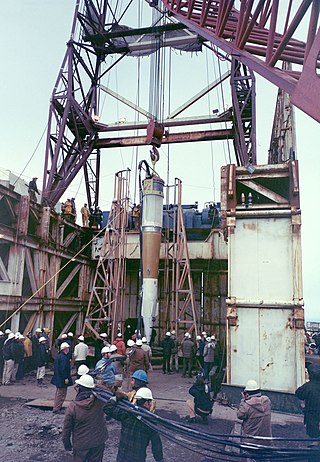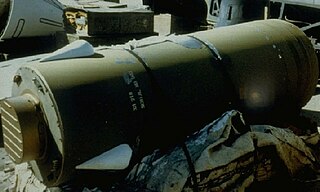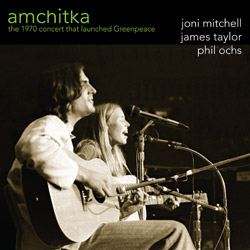Related Research Articles

Greenpeace is an independent global campaigning network, founded in Canada in 1971 by a group of environmental activists. Greenpeace states its goal is to "ensure the ability of the Earth to nurture life in all its diversity" and focuses its campaigning on worldwide issues such as climate change, deforestation, overfishing, commercial whaling, genetic engineering, anti-war and anti-nuclear issues. It uses direct action, advocacy, research, and ecotage to achieve its goals.

Paul Franklin Watson is a Canadian-American environmental, conservation and animal rights activist, who founded the Sea Shepherd Conservation Society, an anti-poaching and direct action group focused on marine conservation activism. The tactics used by Sea Shepherd have attracted opposition, with the group accused of eco-terrorism by both the Japanese government and Greenpeace. Watson is a citizen of Canada and the United States.
The Committee for Non-Violent Action (CNVA) was an American anti-war group, formed in 1957 to resist the US government's program of nuclear weapons testing. It was one of the first organizations to employ nonviolent direct action to protest against the nuclear arms race.

Patrick Albert Moore is a Canadian industry consultant, former activist, an early member and past president of Greenpeace Canada. Since leaving Greenpeace in 1986, Moore has criticized the environmental movement for what he sees as scare tactics and disinformation, saying that the environmental movement "abandoned science and logic in favor of emotion and sensationalism". Greenpeace has criticized Moore, calling him "a paid spokesman for the nuclear industry, the logging industry, and genetic engineering industry" who "exploits long-gone ties with Greenpeace to sell himself as a speaker and pro-corporate spokesperson".

Amchitka is a volcanic, tectonically unstable and uninhabited island in the Rat Islands group of the Aleutian Islands in southwest Alaska. It is part of the Alaska Maritime National Wildlife Refuge. The island, with a land area of roughly 116 square miles (300 km2), is about 42 miles (68 km) long and 1 to 4 miles wide. The area has a maritime climate, with many storms, and mostly overcast skies.
Robert Lorne Hunter was a Canadian environmentalist, journalist, author and politician. He was a member of the Don't Make a Wave Committee in 1969, and a co-founder of Greenpeace in 1971 and its first president. He led the first on-sea anti-whaling campaigns in the world, against Russian and Australian whalers, which helped lead to the ban on commercial whaling. He campaigned against nuclear testing, the Canadian seal hunt and later, climate change with his book Thermageddon: Countdown to 2030. He was named by Time as one of the "Eco-Heroes" of the 20th century.

The W71 nuclear warhead was a US thermonuclear warhead developed at Lawrence Livermore National Laboratory in California and deployed on the LIM-49A Spartan missile, a component of the Safeguard Program, an anti-ballistic missile (ABM) defense system briefly deployed by the US in the 1970s.

Underground nuclear testing is the test detonation of nuclear weapons that is performed underground. When the device being tested is buried at sufficient depth, the nuclear explosion may be contained, with no release of radioactive materials to the atmosphere.
Greenpeace Foundation is an environmental organization based in Hawaii. It was officially founded in 1976 as an independent offshoot of the Canadian Greenpeace Foundation and is the oldest 'Greenpeace' in the United States. When the original Vancouver-based Greenpeace Foundation agreed in 1979 to be represented in Greenpeace International the Hawaii-based Greenpeace Foundation joined them, but a schism in 1985 over wildlife campaign goals and fundraising ethics caused Greeneace Foundation to withdraw, and it remains an unaffiliated organisation doing business nationally and internationally.
Canada has an active anti-nuclear movement, which includes major campaigning organisations like Greenpeace and the Sierra Club. Over 300 public interest groups across Canada have endorsed the mandate of the Campaign for Nuclear Phaseout (CNP). Some environmental organisations such as Energy Probe, the Pembina Institute and the Canadian Coalition for Nuclear Responsibility (CCNR) are reported to have developed considerable expertise on nuclear power and energy issues. There is also a long-standing tradition of indigenous opposition to uranium mining.
Anti-nuclear organizations may oppose uranium mining, nuclear power, and/or nuclear weapons. Anti-nuclear groups have undertaken public protests and acts of civil disobedience which have included occupations of nuclear plant sites. Some of the most influential groups in the anti-nuclear movement have had members who were elite scientists, including several Nobel Laureates and many nuclear physicists.
Irving Harold Stowe was a Yale lawyer, activist, and a founder of Greenpeace. He was named one of the "BAM 100".
Amchitka Air Force Base is an abandoned Air Force Base located on Amchitka, in the Rat Islands group of the Aleutian Islands in southwest Alaska.

Cannikin was an underground nuclear weapons test performed on November 6, 1971, on Amchitka island, Alaska, by the United States Atomic Energy Commission. The experiment, part of the Operation Grommet nuclear test series, tested the unique W71 warhead design for the LIM-49 Spartan anti-ballistic missile. With an explosive yield of almost 5 megatons of TNT (21 PJ), the test was the largest underground explosion ever detonated by the United States.

Amchitka is a 2009 two-CD release of a recording of Joni Mitchell, James Taylor and Phil Ochs performing an October 16, 1970, benefit concert at the Pacific Coliseum in Vancouver. The event funded Greenpeace's protests of 1971 nuclear weapons tests by the U.S. Atomic Energy Commission at Amchitka, Alaska.

Dorothy Anne Stowe was an American-born Canadian social activist and environmentalist, best known for co-founding Greenpeace.

How to Change the World is a 2015 documentary film directed and written by Jerry Rothwell. It documents how the founding members of Greenpeace created the green movement.
The Phyllis Cormack is a 25-meter (82-foot) herring and halibut seine fishing boat, displacing 99 tons and crewed by up to 12 people. The wooden vessel was built in 1941 in Tacoma, Washington, by Marine View Boat Works.

Terry Allan Simmons was a Canadian-American lawyer and cultural geographer, and the founder of the British Columbia Sierra Club. In this role, he participated in the Don't Make A Wave Committee, understood as the origin of the environmental organization Greenpeace.
Project Rufus was a United States nuclear weapons program aimed at investigation and selection of sites within the United States and its possessions that would be suitable for high-yield atmospheric nuclear testing programs. The project's primary purpose was to identify locations where a Minuteman missile silo could be tested under realistic conditions. The project operated under the umbrella of the Vela Uniform research program.
References
- ↑ Paul Watson, Sea Shepherd: My Fight for Whales and Seals (1981), ISBN 0-393-01499-1
- 1 2 AFP (2005-06-07). "Greenpeace Founder Bob Hunter Dies in Toronto". Oregon PeaceWorks. Retrieved 2010-01-30.[ dead link ]
- ↑ "The Founders of Greenpeace". Greenpeace. Retrieved 2010-01-30.
- 1 2 3 4 Brown, Michael; May, John (1991). The Greenpeace Story (2nd ed.). London: Dorling Kindersley. ISBN 978-0-86318-691-2.
- ↑ Protests fail to stop Nuclear Test countdown, The Free-Lance Star - Oct 2, 1969, Accessed via Google News Archive October 4, 2009.
- ↑ Alaska is Braced for Atomic Shock, St. Petersburg Times - Oct 2, 1969. Accessed via Google News Archive October 4, 2009. Has a subtitle - Demonstrators picket US Embassy in Ottawa.
- 1 2 Michael Brown & John May: The Greenpeace Story, ISBN 0-86318-691-2
- ↑ "Our History".
- ↑ Greenpeace to Amchitka, An Environmental Odyssey by Robert Hunter.
- ↑ Sean Connolly, Global Organizations: Greenpeace, Franklin Watts, 2008, p. 12
- ↑ Zelko, Frank (2017). "Scaling Greenpeace: From Local Activism to Global Governance". Historical Social Research. 42 (2). GESIS - Leibniz Institute for the Social Sciences: 321–322. doi:10.12759/hsr.42.2017.2.318-342. ISSN 0172-6404. JSTOR 44234964.
forcing the AEC to conduct a series of public hearings in Anchorage and Juneau in the last week of May 1971. Jim Bohlen and Patrick Moore, a young ecology graduate student at the University of British Columbia, represented the DMWC
- ↑ Captain Paul Watson Biography Archived 2012-05-04 at the Wayback Machine , Sea Shepherd website. Accessed October 4, 2009
- ↑ Sean Connolly, Global Organizations: Greenpeace, Franklin Watts, 2008, p. 13